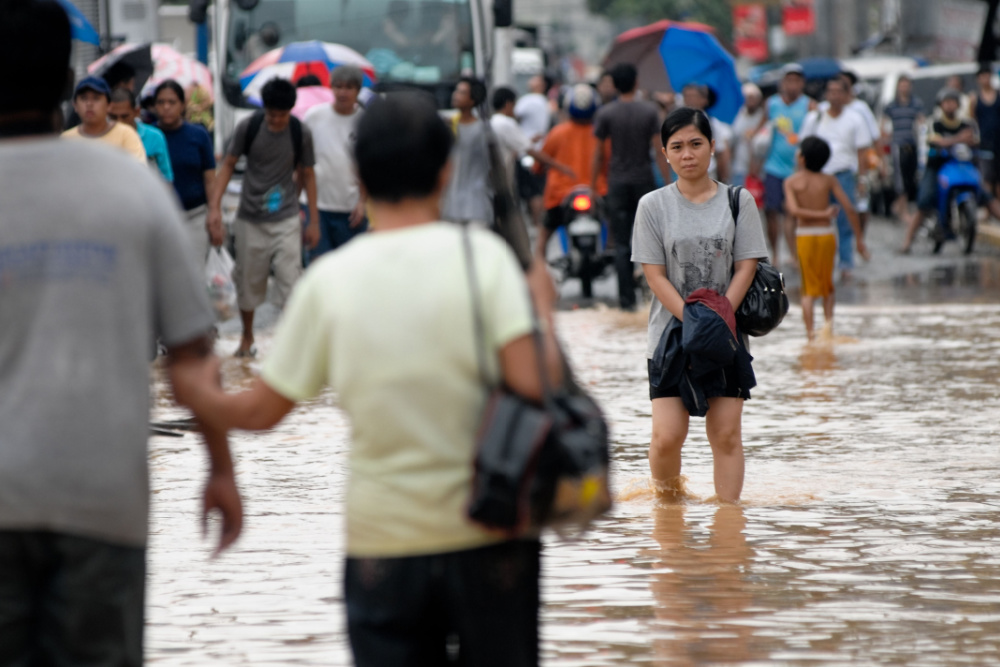Heavy rains and consecutive flooding events triggered by typhoons and the southwest monsoon (“habagat”) are linked to a sharp rise in leptospirosis cases in the Philippines.
In just one month, there’s been a 139% increase nationwide, according to the Department of Health (DOH).
The DOH highlighted a concerning trend: “Cases are on a continuous upswing with 542 cases reported in recent weeks—a sharp 139% leap from the numbers in the preceding fortnight.”
Epicentres of the Outbreak
The most affected areas include Metro Manila and regions like Ilocos and Calabarzon (Cavite, Laguna, Batangas, Rizal, and Quezon), clocking a total of 441 cases in the past month. Other areas like Cordillera, Cagayan Valley, Central Luzon, Mimaropa, Bicol, Western Visayas, Eastern Visayas, and Davao regions also witnessed a rise.
Startling Statistics
From January to Aug. 19, the Philippines reported 3,325 infections. Tragically, 359 cases resulted in death, a mortality rate of 10.8%. These figures indicate the gravity of the situation and the importance of immediate intervention.
Bacolod City’s Alarming Increase
Bacolod City’s health records exhibit an even graver scenario. The Bacolod City Health Office (CHO) unveiled a 204.5% spike in leptospirosis cases compared to last year. Specifically, 67 cases, including 12 fatalities, have been documented since the beginning of the year. In contrast, 2022 saw only 22 cases, with five deaths during the same period.
What is Leptospirosis?
Leptospirosis is a bacterial infection caused by the spirochetes from the genus Leptospira. It primarily affects animals, especially rodents, but can also infect humans. Often found in tropical and subtropical regions, leptospirosis is a global concern, especially in areas with frequent floods or heavy rainfall.
Causes of Leptospirosis
Contaminated Water: The most common cause of leptospirosis in humans is exposure to freshwater (like rivers, ponds, and puddles) contaminated with the urine of infected animals, especially rats.
Direct Contact: Humans can contract the bacteria directly from the tissues or urine of an infected animal. This can happen through cuts or abrasions in the skin or the mucous membranes, like the eyes or mouth.
Environment: Working in damp environments where the bacteria might thrive or in occupations that put individuals in close contact with animals can increase the risk. This includes farmers, miners, and veterinarians.
Symptoms of Leptospirosis
The symptoms of leptospirosis can range from mild to severe and often resemble other illnesses, making diagnosis tricky. They include:
- Mild Symptoms:
- Fever and chills
- Headaches
- Muscle aches, especially in the calves and lower back
- Red eyes or conjunctivitis
- Severe Symptoms (Weil’s disease):
- Jaundice (yellowing of the skin and eyes)
- Renal (kidney) failure
- Hemorrhage (bleeding) in the lungs or other organs
- Meningitis (inflammation of the tissue around the brain and spinal cord)
Symptoms generally appear between 4 to 14 days after exposure but can sometimes manifest earlier or later.
Treatment for Leptospirosis
Antibiotics:
- Early stages: Doctors often prescribe antibiotics such as doxycycline or penicillin to treat mild symptoms.
- Severe cases: Intravenous antibiotics may be necessary for patients displaying severe symptoms or those diagnosed with Weil’s disease.
Supportive Care:
- Hospitalisation may be required for severe cases. This involves providing fluids, managing symptoms, and monitoring organ functions.
Prophylaxis:
- Post-exposure prophylaxis with antibiotics can be given to individuals who are at risk after a particular event, like a flood.
Medical Recommendations
Therefore, given the rapid rise in cases, the CHO advises adults and children to take leptospirosis prophylaxis immediately after exposure to potentially contaminated waters. They also stress the importance of consulting medical professionals without delay.
It’s clear that leptospirosis if left unchecked, poses a significant health risk. Continuous monitoring and timely medical intervention are crucial to curtailing this menace. As the Philippines battles this rising threat, increased awareness and preventive measures are the need of the hour.











